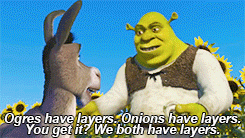Wonderful way to understand it. Thanks, @jhull.
How does this look for the IC’s critical Flaw? Is it critical for his failure to achieve the story goal, or for his failure to influence the MC? And his unique ability, is it his ability to enable the story goal or his ability to hinder the MC?
I don’t want to delete this question, since there are only old posts on the topic. But I did find this “Newer” explanation of the IC Unique Ability, so I’ll share what I found…
The Influence Character Unique Ability is the Influence Character’s unique ability to force the Main Character to change. (Chris)
(source: https://narrativefirst.com/blog/defining-the-influence-characters-unique-ability)
This is connected with the idea of “Changed Main Character Resolve requires the Main Character Solution” (ibid). It means we tie IC unique ability to MC Solution. For Steadfast, it is the IC “anti-MC” trait.
So in a strange way, for an antagonistic MC, failure/good I have this formula.
In my case, if you want an example,
MC UA Facts CF Skill
IC UA Value CF Ability
(MC-CF + IC UA–> OS Sol, Success, bad for Antagonist who wants this to change. She’s stuck in a rut. Her CF is good for her enemies.)
But then in comes her ability
- As long as it remains Skill + Value together it is bringing success (bad for MC antagonist), she needs this to STOP. In comes Facts!
“Facts” MC’s trait of hunting-down truth and facts, which brings in missing information. When this arrives, like Superman it saves the day!
IC-UA - MC-UA–> OS Sol, Failure.
but failure is good because in spite of his Value - Facts leads to a final OS failure; the facts overcome the value. (I think this could also be MC-UA + IC-UA, it’s the two together)
MC-CF + IC-CF --> RS Sol–> OS Sol, Failure
Because we also added Skill + Ability together, the OS failed
and
MC-UA + IC-UA -->RS Sol–>MC Sol, Good.
and personally because IC sees Facts and Value together he changes, causing Solution which STOPS, relieving the MC. (in my case both because of the RS Solution ‘Test’)
I understand the final crisis pivots around this interplay.

